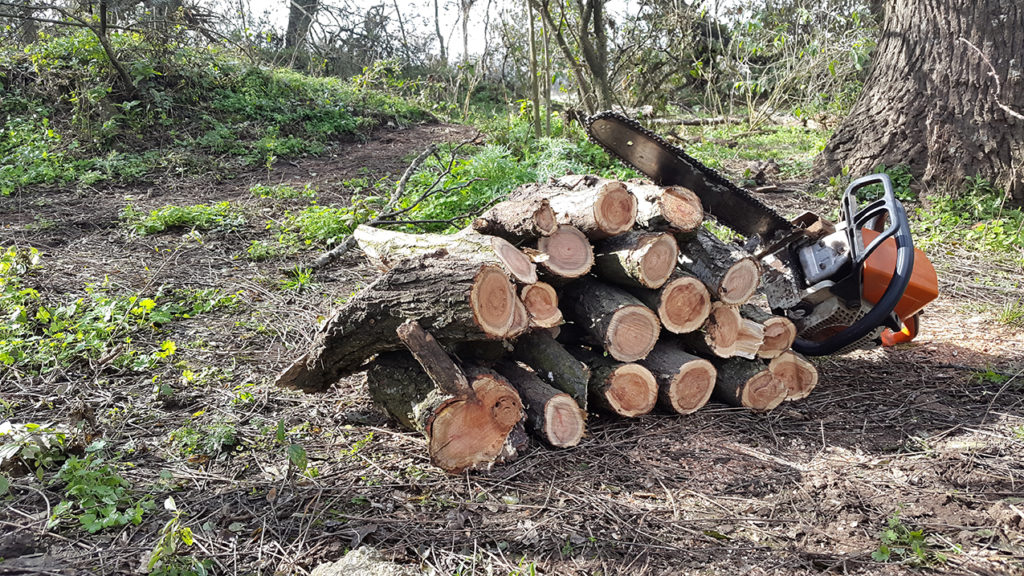Log Cutting Safety Measures
Log cutting is dangerous business. Experienced professionals minimize the risk of injuries and fatalities but even they have to take extreme safety precautions. If you are log cutting, safety measures could mean the difference between life and death – don’t let a moment of negligence lead to an injury that impacts the rest of your life.
Always Wear Protective Gear when Log Cutting
One of the most elementary tips for log cutting is to wear protection. This sounds simple enough, in theory, but the surprising amount of injuries that could have been prevented with personal protective equipment suggests that many people underestimate the importance.
- Hard Hats: Falling and flying objects, even small pieces of wood, can lead to fatalities. Hard hats protect your head with a protective shell that is designed to absorb the energy of impact.
- Hearing Protection: Our ears are not designed to deal with the loud noises of the heavy machinery that log cutting requires. Neglecting to protect your ears from these loud noises can cause hearing loss. This happens gradually, so you may not be able to recognize it to stop it from happening. Be proactive in protecting your hearing.
- Eye and Face Protection: Regular glasses or sunglasses or your home-remedy face shield are not reliable to protect your eyes and face. You can identify legitimate protective wear by the ANSI (American National Safety Institute) stamp. Injury to the eyes and face are high risk and can have a lasting impact; appropriate protection is essential.
- Body Protection: Legs of anyone who will be working with a saw should be protected with saw chaps. Fitted clothing should cover the entire body, with no dangling fabric or exposed skin. Heavy duty, cut-resistant boots should protect the feet. OSHA requires that UL approved, cut-resistant boots are worn by all workers operating a chainsaw. Protective gloves are also very important.
Chainsaw Safety for Log Cutting
When preparing to cut wood, check to make sure the chain is sharpened and that the controls, chain tension, bolts and handles are all as they should be. Make sure that the fuel is 10 feet from the ignition sources and don’t start the chainsaw within 10 feet of the fuel. While operating the chainsaw, keep your hands on the handles and maintain firm footing. Avoid cutting overhead and keep obstacles out of your path.
Safe & Controlled Felling
Felling is the part of the process where most injuries and fatalities occur. There are important steps to take in order to avoid these injuries.
- Wear personal safety equipment.
- Pinpoint potential hazards and form a plan to avoid them.
- Identify the best felling direction, and plan an escape from it.
- Figure out the proper hinge size; the wrong size can lead to an accident.
- Perform the correct cut to ensure controlled felling.
Contact Turner Logging, LLC today if you would like to learn more about how to stay safe while log cutting.

